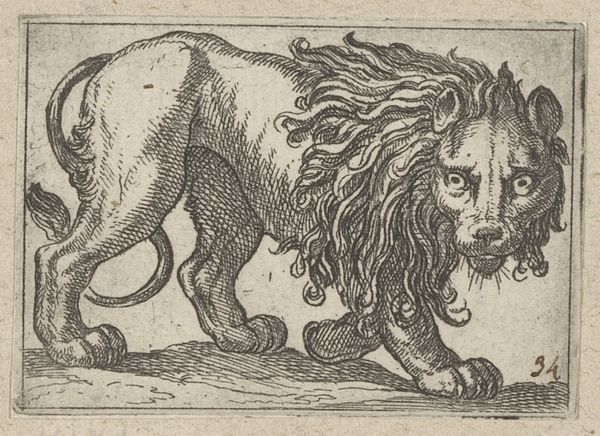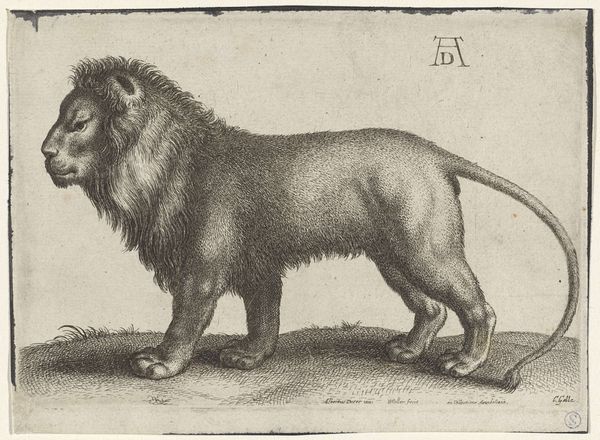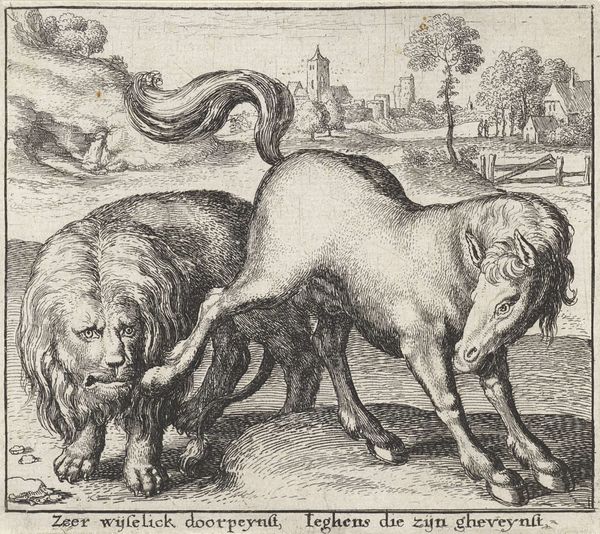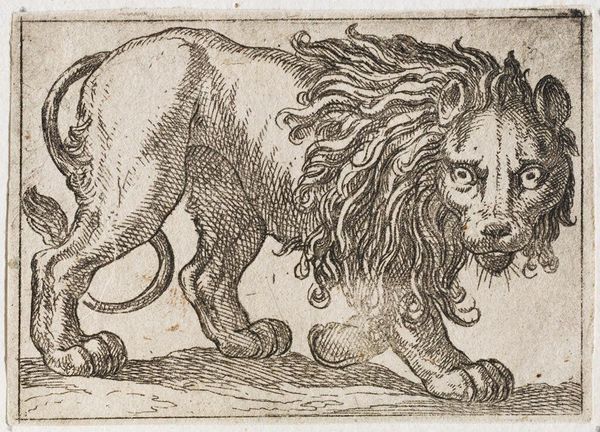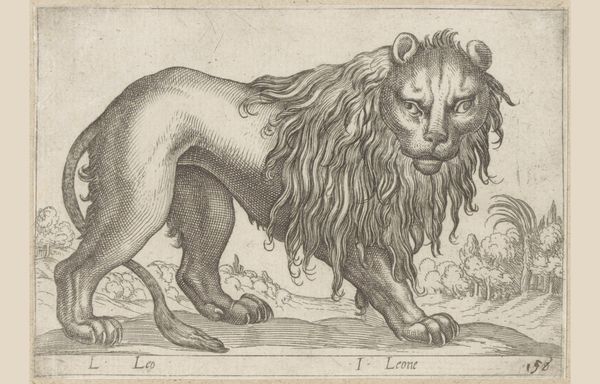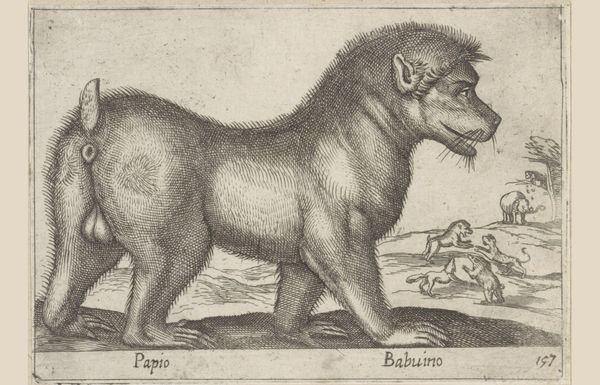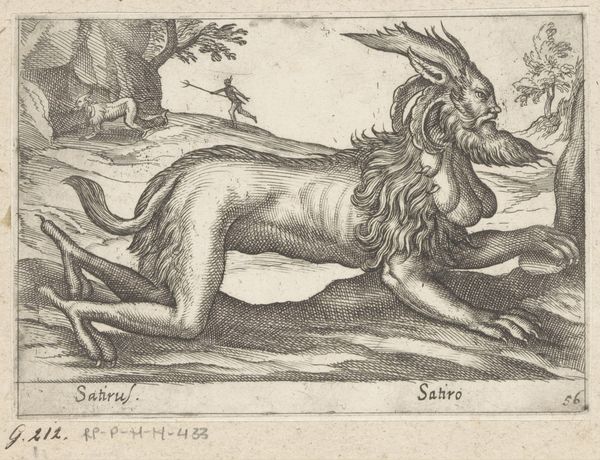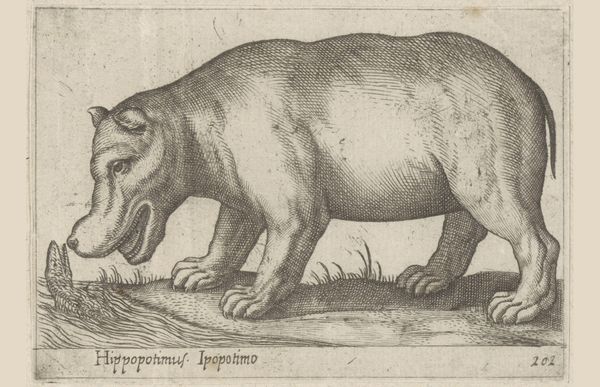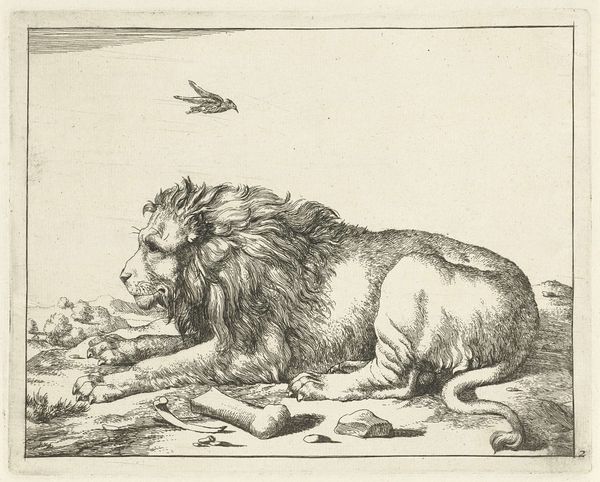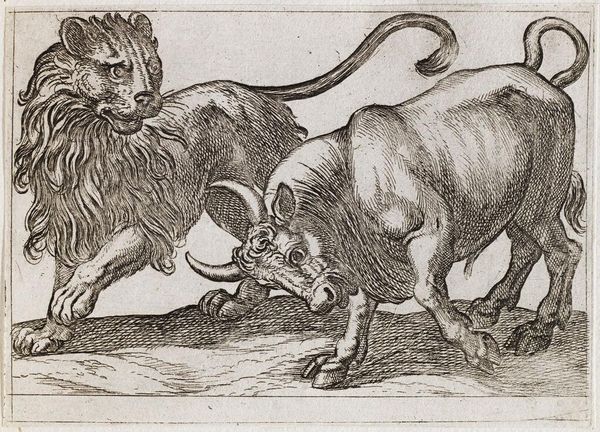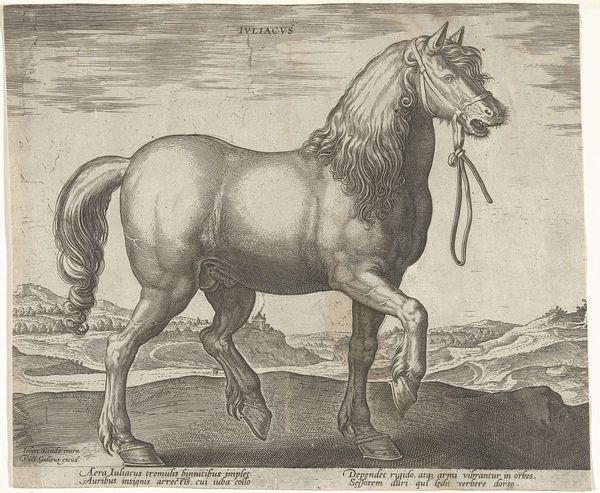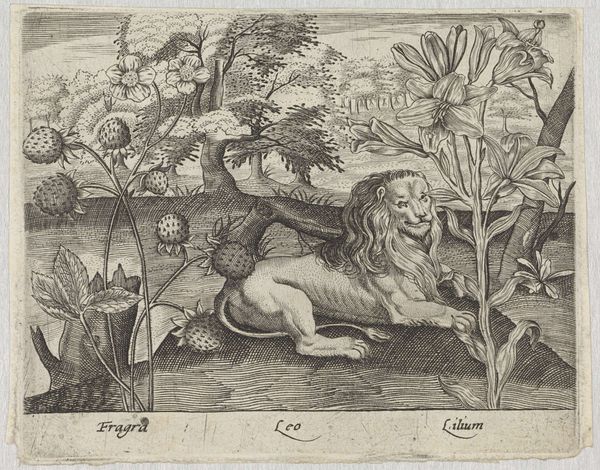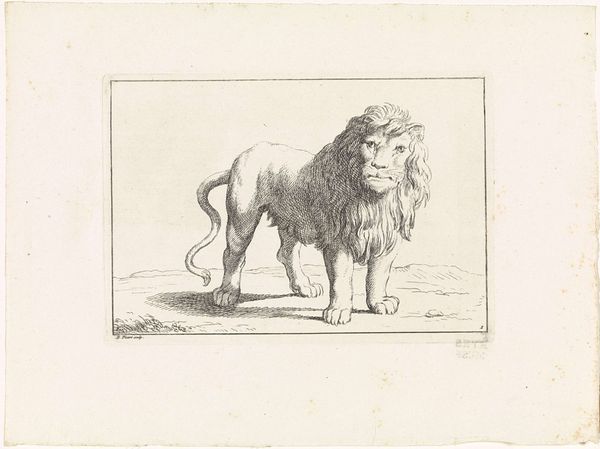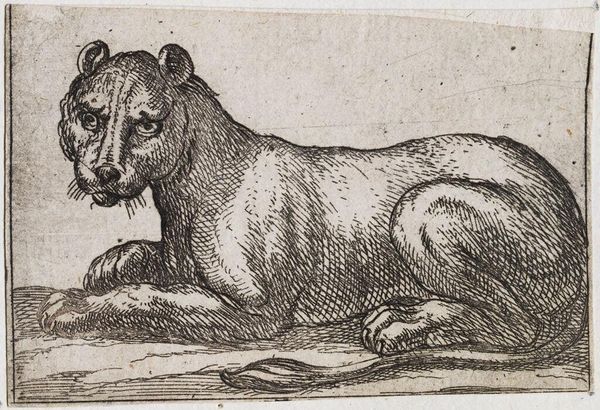
print, engraving
#
portrait
#
toned paper
# print
#
pen sketch
#
pencil sketch
#
old engraving style
#
figuration
#
11_renaissance
#
pen-ink sketch
#
mythology
#
line
#
portrait drawing
#
engraving
Dimensions: height 95 mm, width 137 mm
Copyright: Rijks Museum: Open Domain
Antonio Tempesta made this print of a Manticore in the late 16th or early 17th century. It's an etching, meaning that the artist would have used a sharp needle to draw through a wax ground on a copper plate, which was then submerged in acid. The acid bites into the exposed metal, creating lines that hold ink. Look closely and you'll see how Tempesta used layers of hatching to build up the forms of the fearsome creature, and to describe the landscape it inhabits. The print medium was closely linked to commerce; prints were relatively cheap to produce and easy to disseminate widely. The imagery is of its time, but it also speaks to the timeless power of the graphic arts, and how such images can capture the imagination. The Manticore is a mythical beast with the body of a lion, a human head, and a tail that can shoot venomous spines – a striking example of the enduring human desire to mix the animal and human realms, and to picture the hybrid monsters that result.
Comments
No comments
Be the first to comment and join the conversation on the ultimate creative platform.
